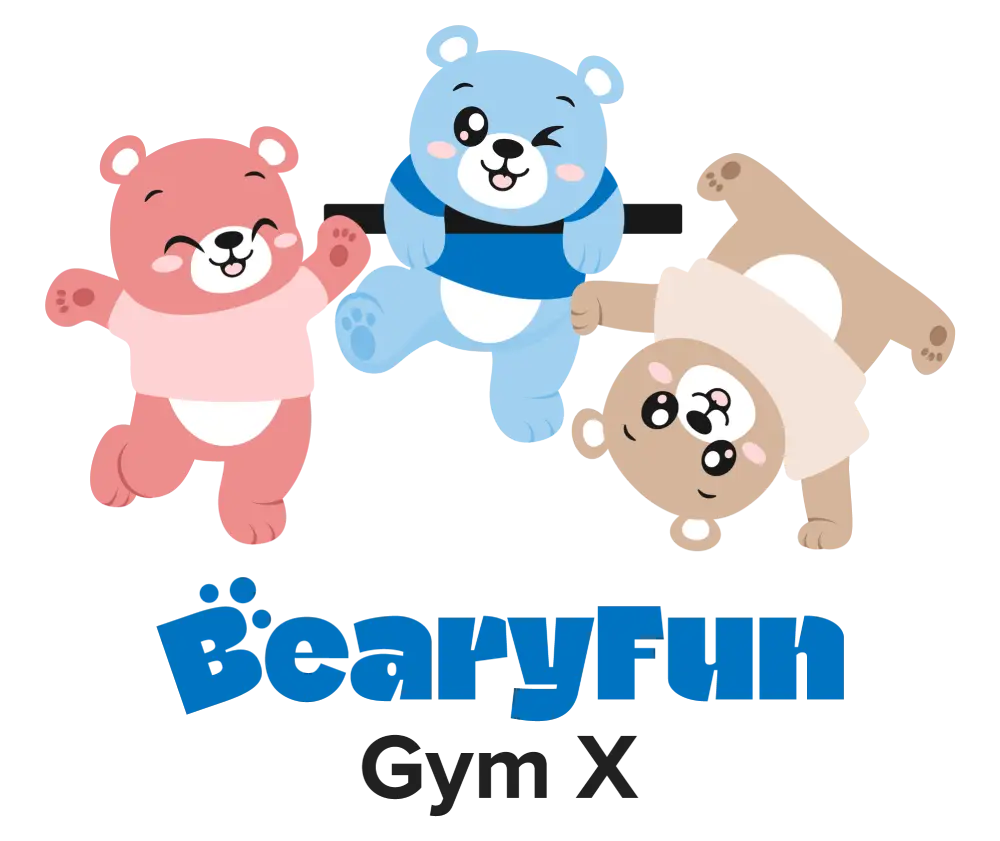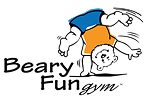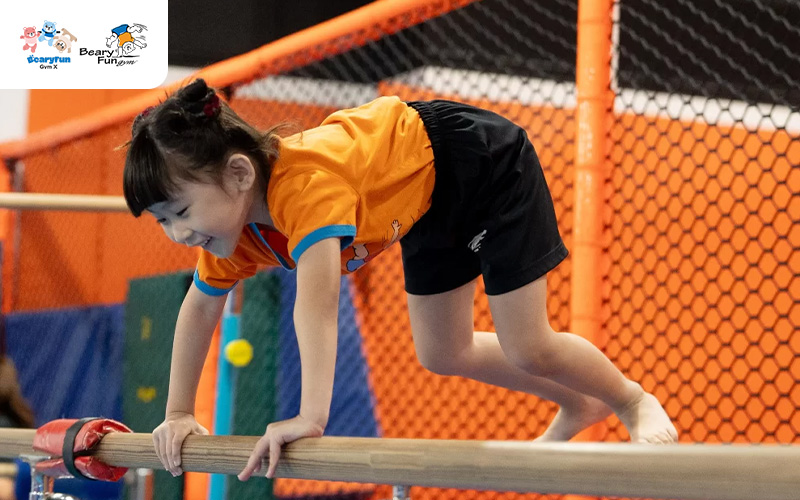Key Takeaways
- Preschool gymnastics builds strength, balance, and coordination in a fun and supportive environment.
- Core movements such as rolling, jumping, and balancing support long-term motor skill development.
- Basic gymnastics skills and drills for preschoolers are designed to encourage social interaction, confidence, and a love for movement.
Physical movement during the preschool years is vital for a child’s development. The right kind of structured activity lays the foundation for healthy physical development, shaping everything from coordination and strength to focus and emotional confidence. That is why many parents are turning to preschool gymnastics as an engaging and effective way to support their child’s growth.
At this age, it is not about perfecting routines or competing. Instead, it is about mastering basic gymnastics skills and drills for preschoolers that prepare them for more advanced movements later on, both in gymnastics and in everyday life. Here are some examples of the fundamental skills that your child will be exposed to.
Rolling: Building Body Control and Awareness
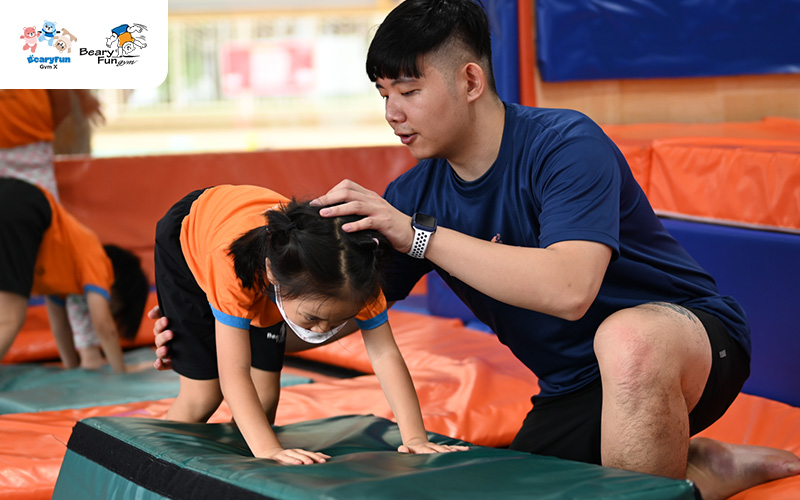
Rolling is often one of the first skills introduced in a preschool gym setting. From forward rolls to log rolls, these movements help young children understand how their body moves through space. Rolling develops core strength, neck and back muscles, and spatial awareness. It also teaches children how to tuck, rotate safely, and recover from falls—skills that are useful not only in sport but also in daily play.
Jumping and Landing: Developing Strong Legs and Safety Habits

Jumping is a joyful, natural movement for preschoolers. In terms of gymnastics skills and drills for preschoolers, it becomes a structured way to teach safe landing techniques. Children practise two-foot jumps, hopscotch drills, and jumping down from small platforms. These exercises help strengthen the legs and ankles while reinforcing how to bend the knees and land softly. Mastering these techniques reduces the risk of injury and sets the tone for future athletic activities.
Balancing: Improving Stability and Concentration
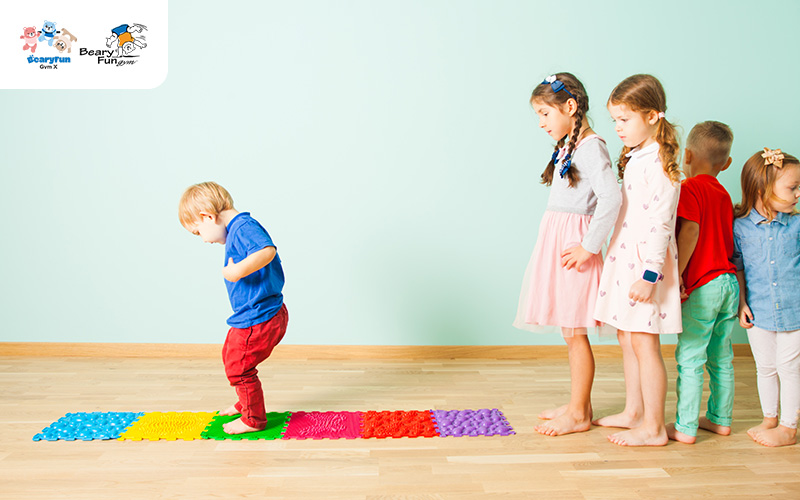
Balance is a fundamental skill in both gymnastics and general motor development. Preschoolers learn to walk on balance beams, stand on one leg, or hold yoga-like poses. These exercises are excellent for posture, muscle control, and focus. In an already packed preschooler’s schedule, time spent developing concentration through movement is a valuable way to prepare them for school and other structured environments.
Locomotor Skills: Building Coordination through Movement
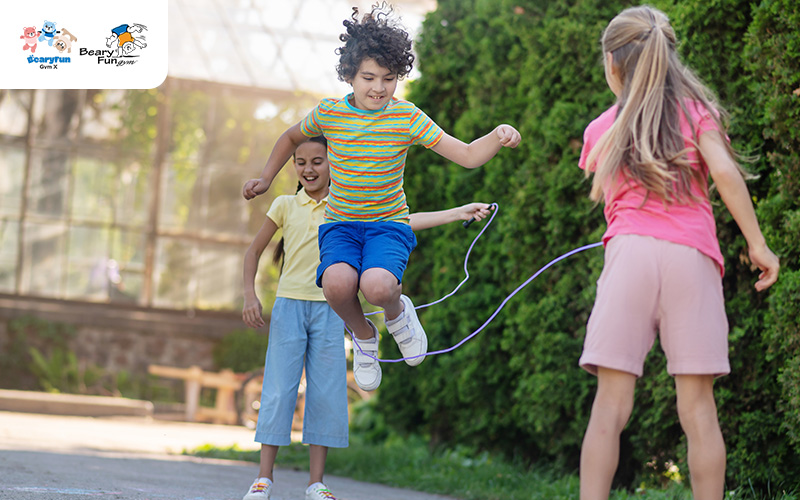
Locomotor skills include crawling, skipping, hopping, running, and galloping, basics that form the foundation for more complex sports movements. In a preschool gymnastics curriculum, these are often practised through fun obstacle courses, follow-the-leader games, or imaginative movement challenges. They improve coordination, body awareness, and overall agility, which are essential for both physical and cognitive growth.
Simple Circuits: Combining Skills for Endurance and Planning
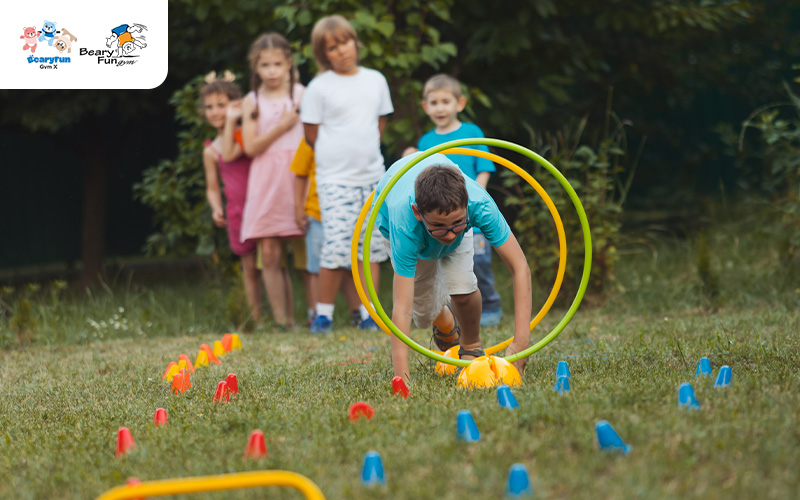
A child-friendly circuit combines different gymnastics skills and drills for preschoolers in one go. For example, a child might roll on a mat, walk a balance beam, crawl through a tunnel, and finish by jumping on a small trampoline. These short circuits build endurance and encourage motor planning, which is the ability to think ahead and coordinate movement. They also support turn-taking and patience, key social-emotional skills in early childhood.
Bar Work: Introducing Grip Strength and Confidence
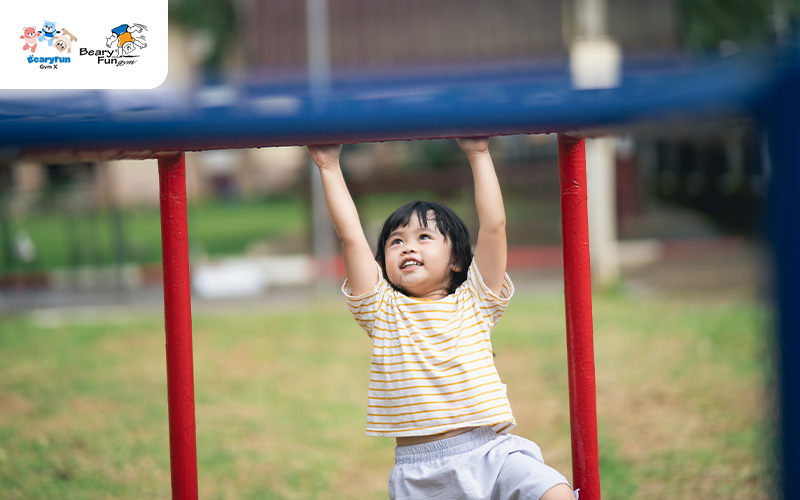
Even simple bar activities can offer tremendous benefits. Hanging from a bar helps build grip and upper body strength while encouraging your child to be brave and trust in their own ability. Preschoolers may also try mini pull-overs or swinging gently with support. These bar activities are part of the core gymnastics skills and drills for preschoolers, laying the foundation for future exercises on uneven bars or monkey bars at the playground.
Trampoline Drills: Timing, Rhythm, and Core Strength
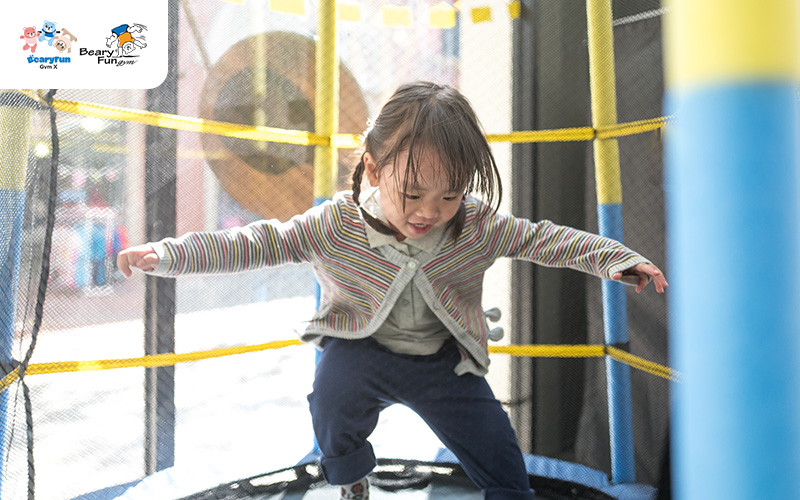
Trampolines may seem fun—and they are indeed a blast—but they are also functional. Bouncing on a trampoline helps with balance, rhythm, and spatial control. Under supervision, children practise straight jumps, star jumps, or jumping in rhythm with a song. These movements strengthen the core and legs whilst reinforcing safe landing techniques. Trampolines are often a highlight in preschool gym sessions because children tend to enjoy bouncing on them and picking up important motor skills in the process.
Preschool years are the perfect time to nurture a child’s love for movement. The right gymnastics skills and drills for preschoolers support healthy physical development, build confidence, and create strong movement habits that carry into later childhood and beyond. Whether it is rolling, balancing, or mastering locomotor skills, each step contributes to a solid foundation for life.
At BearyFun Gym, we specialise in designing age-appropriate preschool gymnastics programmes that are safe, fun, and effective. Our facilities in Singapore are built with children in mind, and our experienced coaches are trained to guide little ones through each stage of development.
To learn more about our programmes and facilities, please contact us today.
